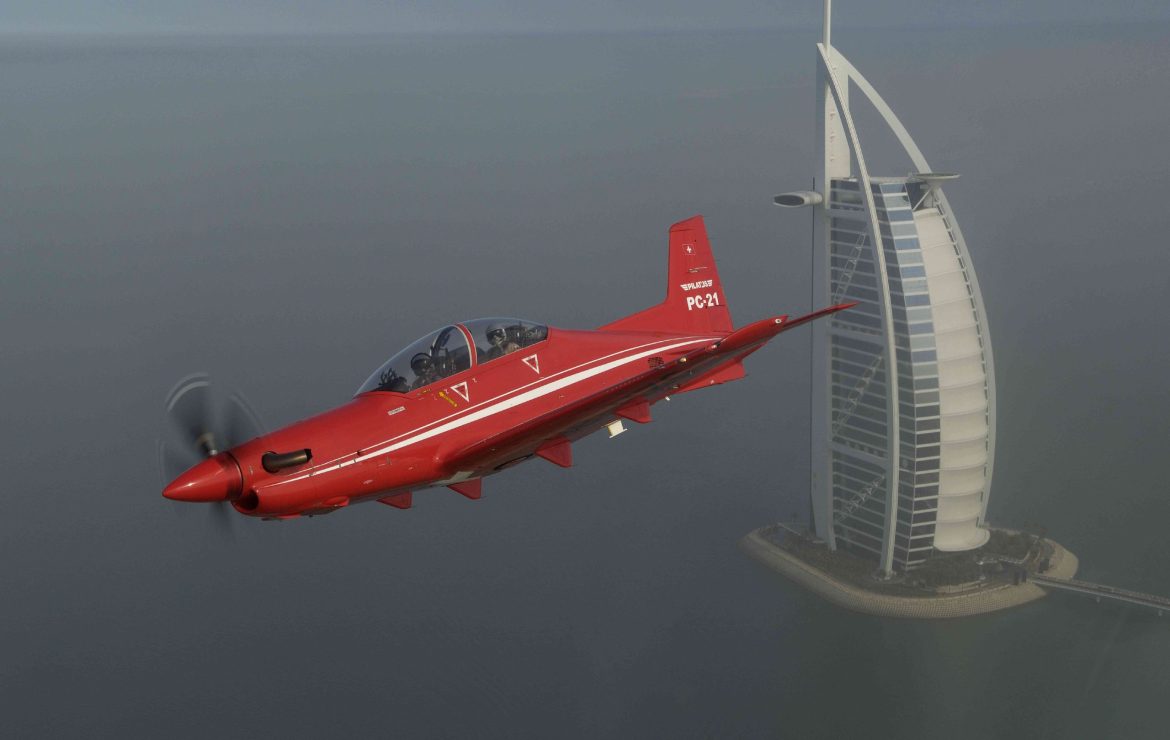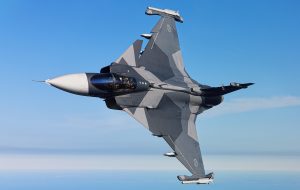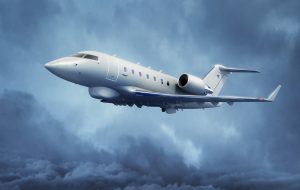Military training aircraft are of great importance to air forces in various armies around the world. They play a crucial role in building a distinct and effective air force capable of dealing with various air defence challenges. They are a vital tool in training and developing new pilots, testing weapons, and enhancing military capabilities.
These aircraft provide a cost-effective and safe training and learning environment before pilots can fly more complex fighter aircraft. They enable pilots to acquire basic flying skills, such as aircraft control, manoeuvring, and the necessary confidence to handle air combat scenarios.
Training aircraft also contribute to developing and testing pilots’ skills in military air defence, enabling them to learn advanced military flying techniques, attack and defence tactics, and the ability to deal with risks in complex aerial environments.
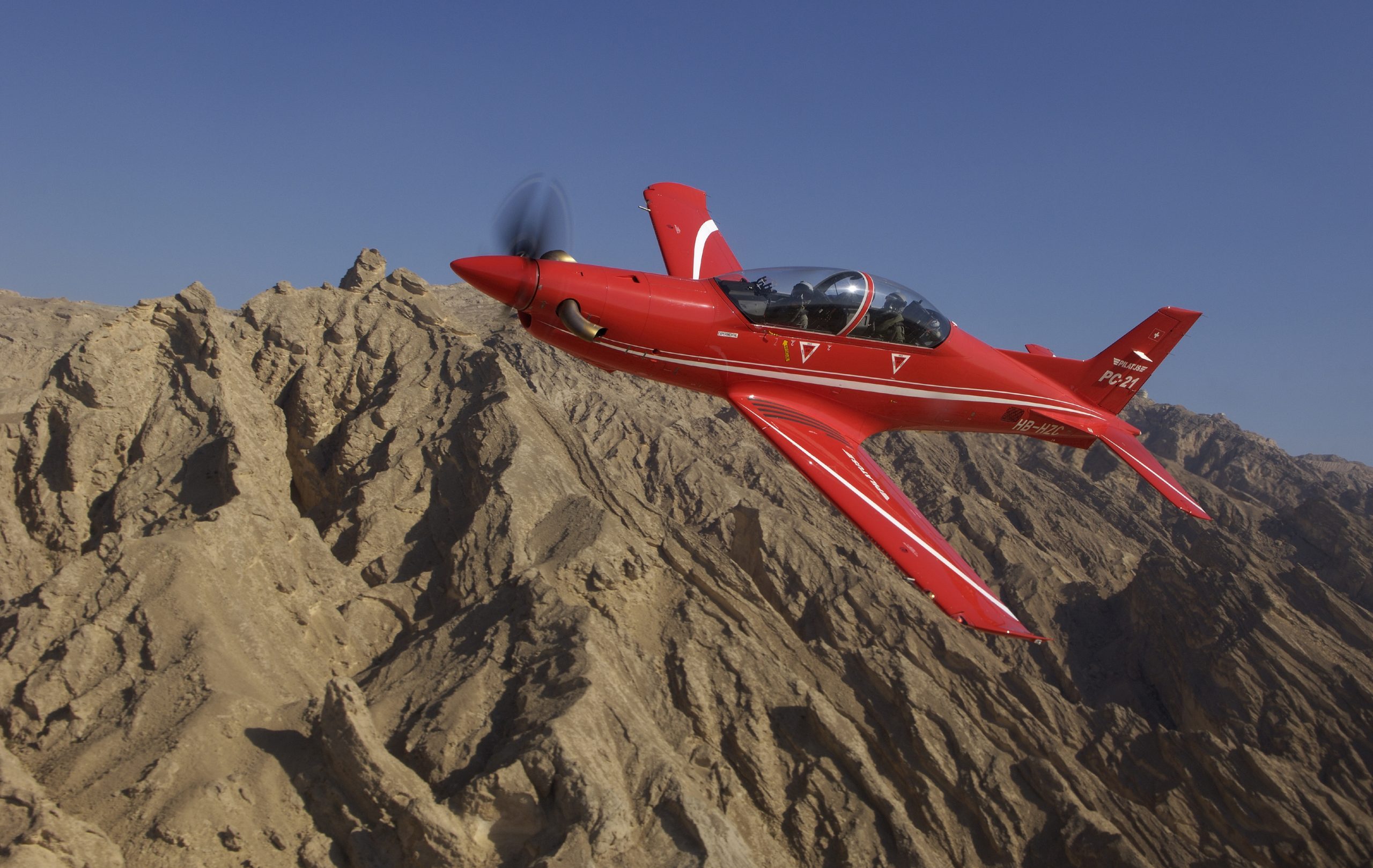
Furthermore, training aircraft can be used to test and evaluate new air systems and weapons. Instead of exposing valuable combat aircraft and their crews to risks, training aircraft can be used to experiment with new weapons and advanced combat techniques, assessing their efficiency and effectiveness before using them in real battles.
Training aircraft are used in the training of various teams, such as air traffic control teams, maintenance teams, and ground support teams. This provides a common training environment to enhance cooperation and coordination among different teams and develop their skills in dealing with complex air systems.
Switzerland is one of the leading countries in manufacturing military training aircraft. The efficiency of its products has attracted the attention of air forces worldwide, seeking to benefit from the capabilities and advantages of training aircraft, which have become an essential requirement for developing the skills of pilots in the air forces.
Pilatus PC-21
One of the most notable Swiss companies specialising in aircraft manufacturing is Pilatus. Founded in 1939, Pilatus gained a reputation through the production of the famous and efficient training aircraft, the Pilatus PC-21.
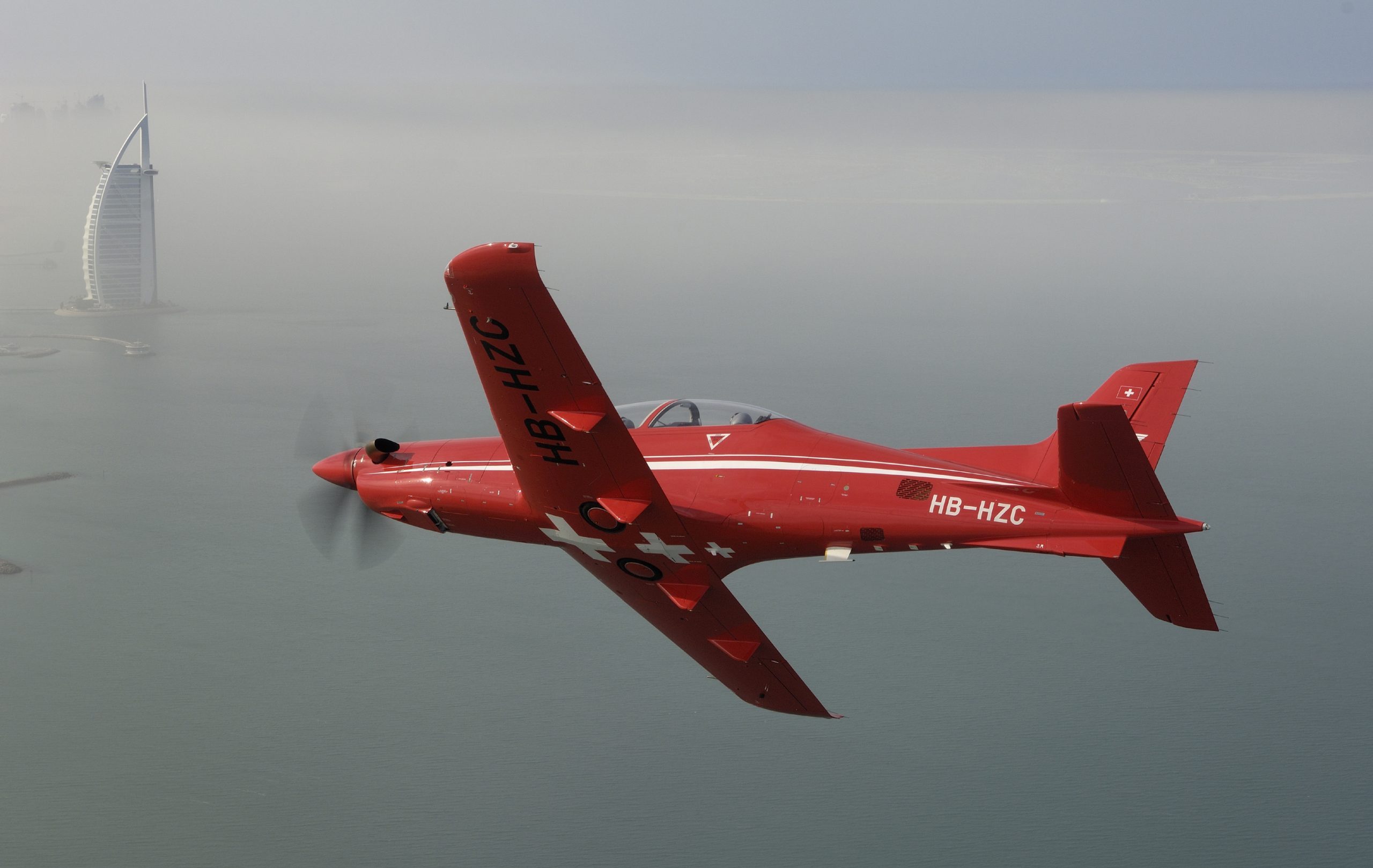
The Pilatus PC-2, an advanced military training aircraft, is considered one of the most important and effective training aircraft in the world, possessing modern features and technology that make it a preferred and cost-effective choice for military pilot training, skill development, and enhancement of combat capabilities.
Moreover, it contributes to strengthening their air forces, building a strong and capable air force that can meet modern military challenges.
REALISTIC TACTICAL TRAINING
The Pilatus PC-21 is an advanced training platform that allows new pilots to learn basic and advanced skills in aviation, aerial combat, and various tactics. students can gain experience and practice military tasks and challenges before transitioning to actual combat aircraft.
The PC-21 embedded radar simulation and integral datalink system allow for the teaching of radar techniques and simulated weapons deployment against computer-generated targets and real aircraft.
This type of training on the PC-21 can significantly reduce or replace expensive jet training.
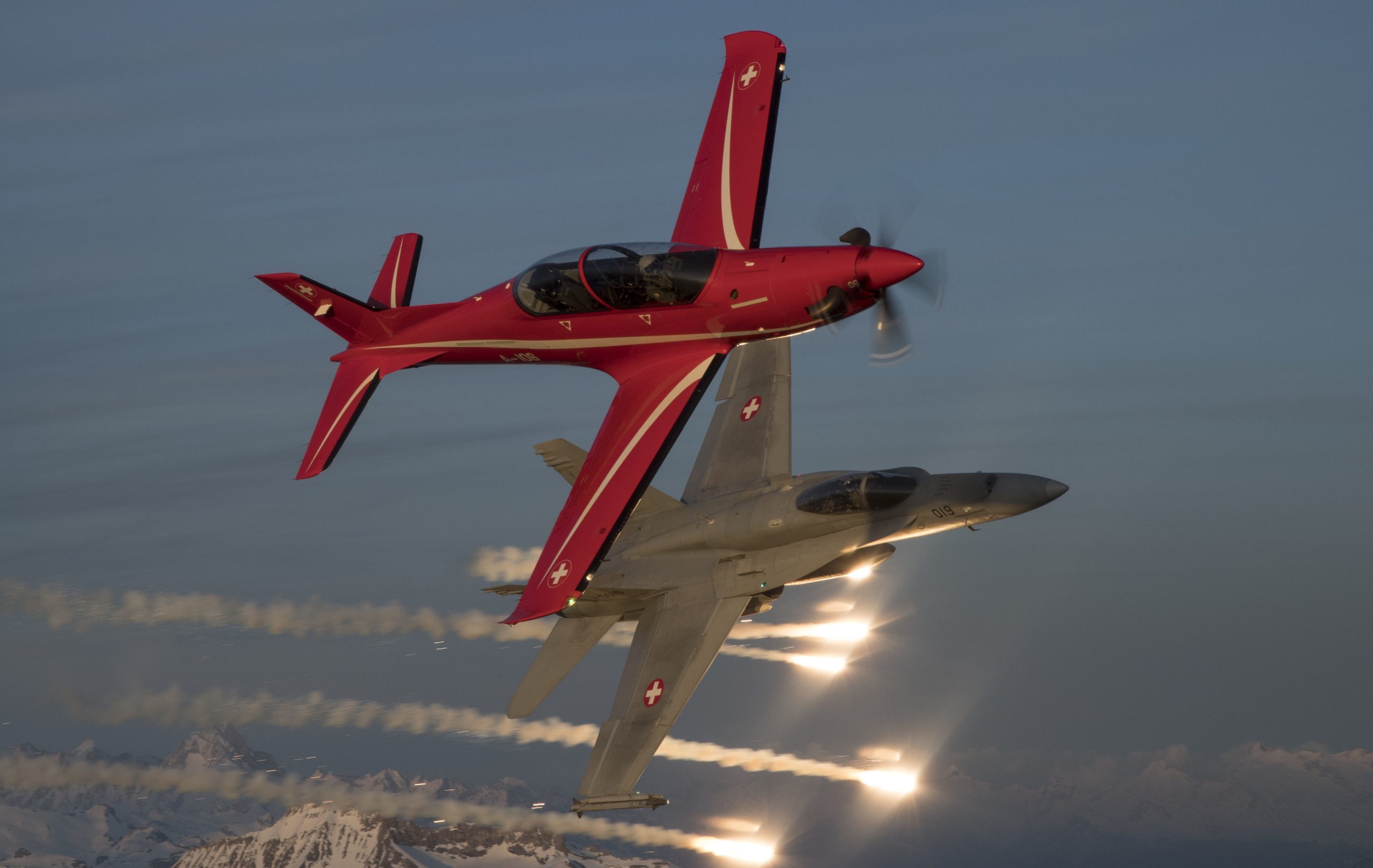
The PC-21 can simulate almost any weapon found on the latest generation of fighter aircraft. Realistic tactical training can be carried out without the extra costs associated with practice weapons and air-to-ground weapons ranges.
Using the radar simulation, the PC-21 can help teach beyond visual-range missile employment without the need for other aircraft as airborne targets.
As for air-to-ground training, the PC-21 provides various weapon modes such as continuously computed release point and continuously-computed impact point delivery modes, a synthetic air-to-ground radar and a ‘no-drop’ bomb scoring system.
Combat capabilities development
The unique Swiss aircraft provides comprehensive training that encompasses flying, tactical combat training, and response to airborne threats, enhancing pilots’ capabilities in handling challenging situations and making rapid decisions in a realistic aviation environment.
The Pilatus PC-21 is also designed for training in various military capabilities, including air-to-air and air-to-ground attacks, as well as targeting both land and sea-based targets. It ensures high levels of safety and security, thanks to its advanced electronic control system and collision avoidance sensing and warning system.
Cost Reduction
With air force budgets under continuous pressure, the PC-21 provides air forces with a cost-effective but highly efficient training solution, while reducing maintenance and operational costs, in addition to providing low-cost easily accessible spare parts. This provides more time and effort for pilot training.
Advanced Technology
The Pilatus PC-21 training aircraft is equipped with the latest advanced aviation technologies and systems. It features an advanced electronic control system, digital display screens, and advanced communication systems, enhancing the training experience and contributing to the development of pilot skills.
With fully integrated systems, the PC-21 provides a proven and effective solution to meet the training needs of today’s pilots.
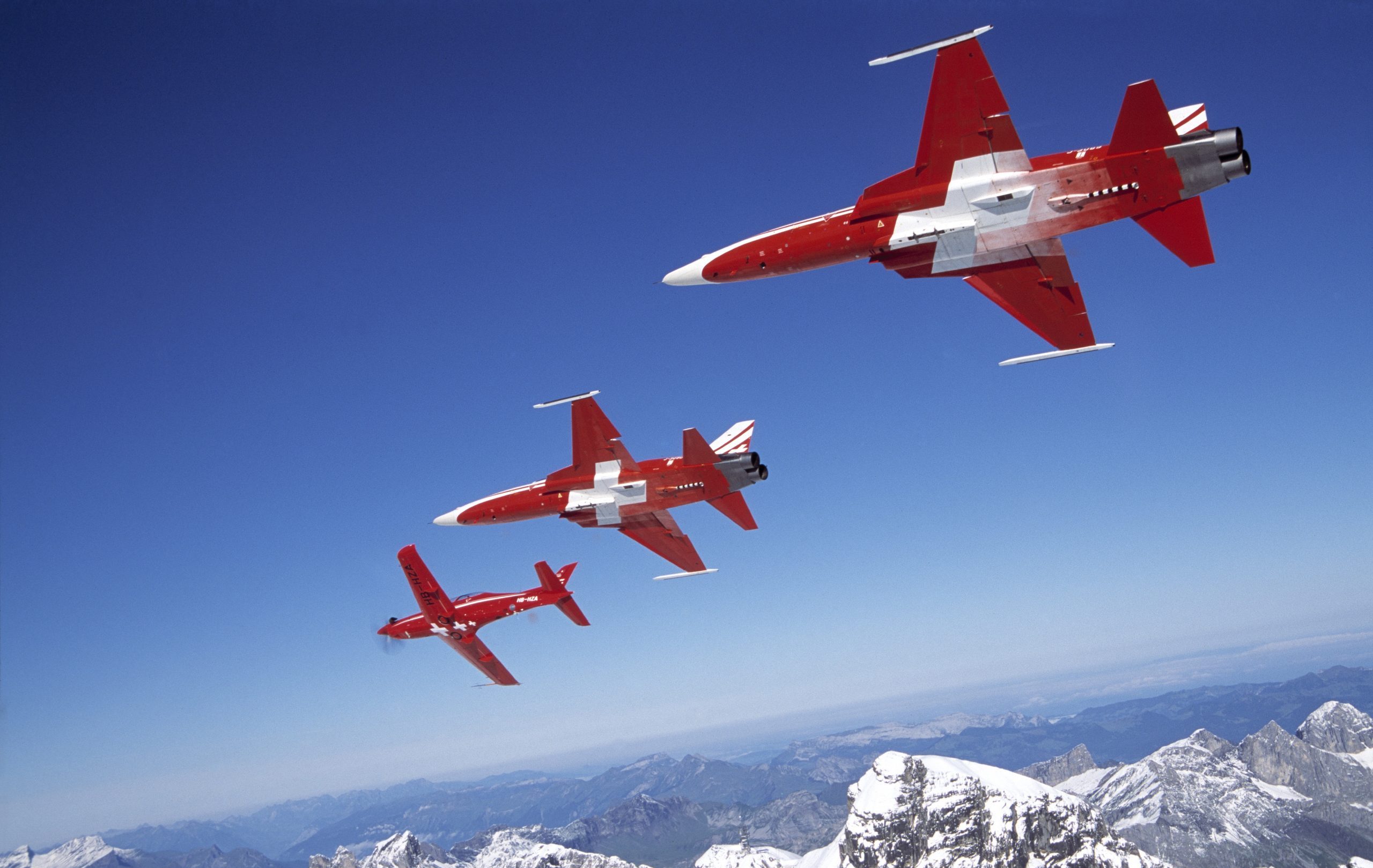
This integrated training system allows trainees to access mission profiles, which was previously only possible on expensive jets.
Unique qualities
Nicknamed “The 21st Century Advanced Trainer”, the PC-21 is certified as a completely new training system to meet modern air forces’ expectations over the next 30 years, both in terms of capability and life-cycle cost.
The PC-21 has better aerodynamic performance than any other turboprop trainer on the market, pushing the speed and climb rate into a domain previously reserved for jets only. It also has a more powerful, flexible, and cost-effective integrated training system than any other jet or turboprop training aircraft.
Furthermore, this two-seater aircraft is designed to be easy to control for beginner students while still providing a challenge for pilots preparing for frontline operations.
The 1600 hp Pratt & Whitney PT6A-68B engine and five-blade graphite propeller push the speed and climb rate of the PC-21 into an area that was, until now, exclusively jet territory.
The PC-21 is capable of sustained low-level speeds in excess of 320 knots (593 km/h). Hydraulically-assisted ailerons and roll spoilers can produce fighter-like roll rates in excess of 200° per second.
A digital power management system and automatic yaw compensation ensure the performance required for advanced training. The capabilities of the PC-21 make it ideally suited to a very wide training envelope. It can be used from day one, eliminating the need for an elementary flying training fleet and bridging the performance gap between traditional turboprop trainers and expensive lead-in fighters.
A FULLY CUSTOMISABLE GLASS COCKPIT
This unique Swiss training aircraft features a fully digital glass cockpit, with the ability to simulate frontline aircraft. This flexibility helps to shorten the training process and increases the overall success rate.
Given that systems integration is at the heart of the PC-21 cockpit philosophy, an advanced trainer aircraft, the cockpit display and control systems are configured to match the latest generation front-line aircraft as closely as possible, thus trainees are exposed to an operational cockpit environment at the earliest stages of their training.
This enables aircrew to acquire skills that are of direct relevance to front-line aircraft from day one.
The one-piece canopy has no metal arch in the front cockpit improving visibility for the pilot. This is achieved without compromising bird strike protection.
Environmental control and a pressurised cabin maximize crew comfort. The zero-zero ejection seats provide unparalleled safety whilst accommodating the widest anthropometric range in this class of aircraft.
MAXIMISING TRAINING EFFICIENCY ON GROUND
The objective of a modern pilot training system is to produce a pilot capable of meeting the demands of flying today’s sophisticated aircraft. With the increasing cost of equipment, resources and time, this goal needs to be achieved as economically as possible, thus preparation on the ground reduces perspiration and failure in the air.
By the time students fly, they should be familiar with aircraft systems and avionics functionality. Thus the PC-21 Ground-Based Training System translates student learning into an airborne context.
While designing the PC-21 Integrated Training System Pilatus recognised that flexibility is essential and that customer requirements, resources and budgets will obviously vary. Therefore, it paid great attention importance to offering customised solutions.
A comprehensive set of training products is available to cover all aspects of ground-based training. From the simplest type of training aid, such as an aircraft silhouette, through to a full flight simulator, all Pilatus training equipment is designed to support integrated, progressive learning.
Infographic
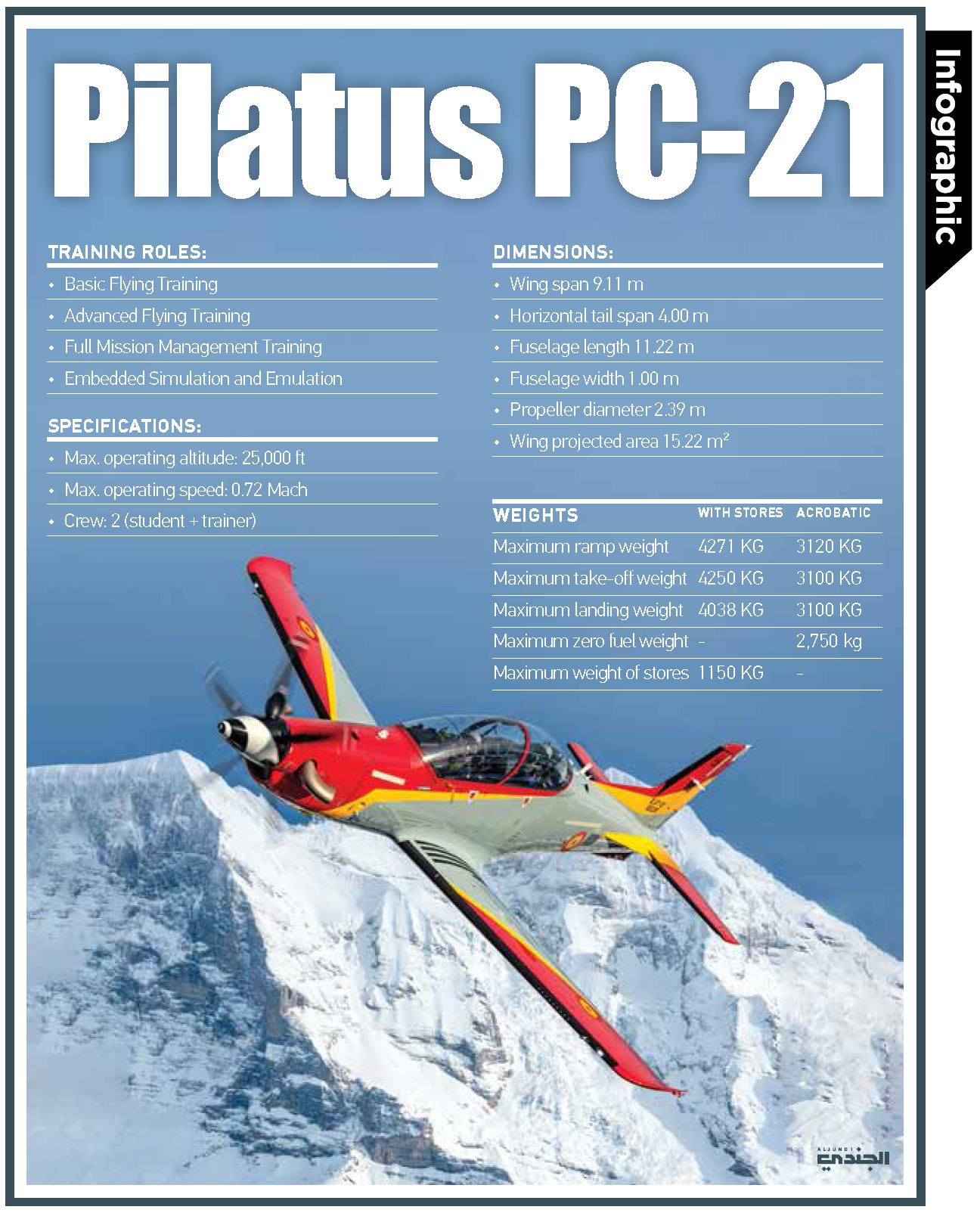
By: Ikram Bendalla (research specializing in military affairs)


